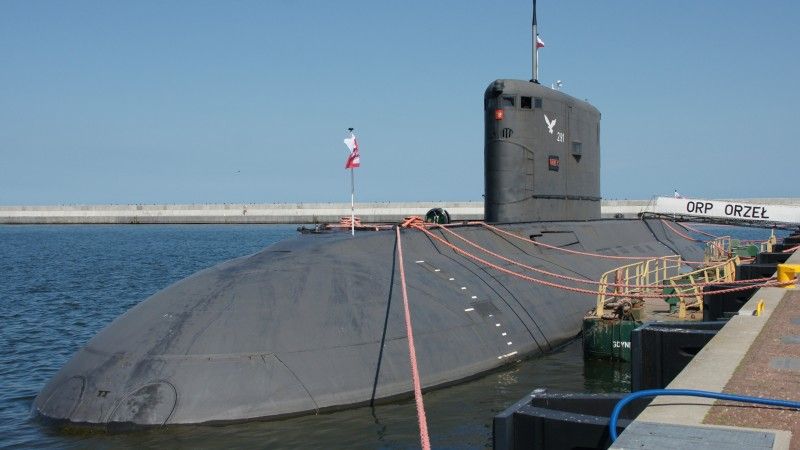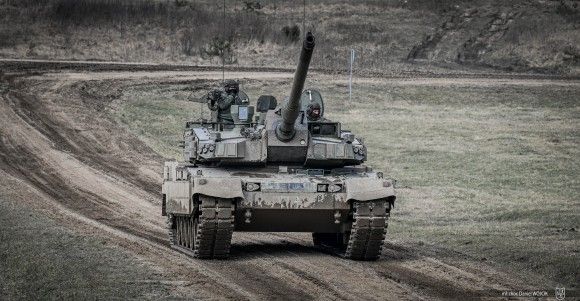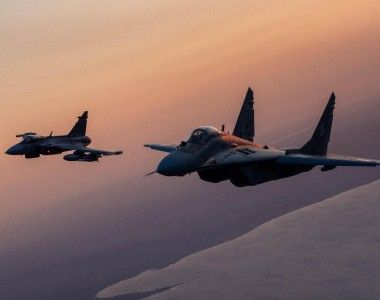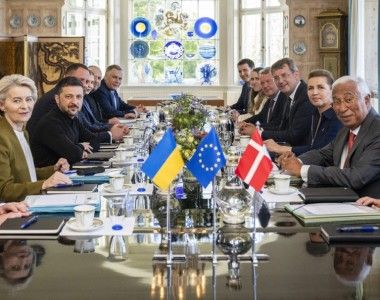How does the Polish Ministry of Defence plan to spend 175 billion PLN? [REPORT]

Photo. Jarosław Ciślak
As previously reported, the draft defense budget for 2025, part of the state budget, was submitted to the Sejm at the end of September. It now awaits the standard parliamentary procedure, which must conclude by the end of January 2025 with the president signing the budget bill.
- What will defence spending look like in 2025?
- How much is allocated for soldiers' salaries?
- What will the largest financial resources be spent on in the modernization of the Armed Forces?
Total defence spending from the state budget in 2025 is expected to amount to 124.302 billion PLN, representing 3.1% of GDP, in line with the provisions of the Act on Homeland Defence, which requires a minimum of 3% of GDP to be spent on defence. This spending includes:
- PLN 123.526 bn. in the “National defence” part (29) of the budget;
- PLN 0.776 billion in section 752 (national defence in other parts of the budget).
Additional allocations include:
- PLN 272.7 million for the Non-Military Defence Preparations Program (2021-2035);
- PLN 250 million for R&D and specific purpose defence projects;
- PLN 55 million for Poland's membership fee for the European Space Agency (ESA);
- PLN 147.3 million for prosecutor's offices activity, having jurisdiction over military cases;
- PLN 51.1 million for tasks related to military qualification and draft procedures.
Capital Expenditures
Capital expenditures across all parts of the state budget are set at PLN 51.768 billion, including:
- PLN 51.532 billion under part 29 (national defence);
- PLN 0.236 billion in other budget sections.
The Act on Homeland Defence mandates that no less than 20% of defence spending go toward capital expenditures, a requirement that will be met in 2025 as 41.7% is planned for these expenses.
The Armed Forces have a limit on personnel positions during peacetime, though this is not fully utilized. Funding for maintaining an average number of military personnel, officers, and civilian employees is included in each budget.
For 2025, the planned personnel maintenance includes:
- 150,000 professional soldiers;
- 3,521 counterintelligence and military intelligence officers;
- 44.000 soldiers in Territorial Military Service (TSW, Terytorialna Służba Wojskowa);
- 35,000 voluntary basic military service soldiers;
- 8,028 professional soldiers in training (from the second year onward);
- 4,700 voluntary basic military service soldiers in training (first year);
- 30,000 active reserve soldiers;
- 5,000 soldiers in active and passive reserve, within the framework of military exercises;
- 57,143 military employees.

Photo. Mirosław Mróz Defence24.pl
A total of PLN 25.424 billion is allocated for salaries and wages, including a planned 5% increase in 2025 for soldiers, intelligence officers, civilian employees, and teachers. Additionally, 12.060 billion PLN is set for pension benefits for 158,753 recipients, including planned indexation and 13th and 14th pension payments.
Key Plans, Including Technical Modernization of the Polish Armed Forces
In 2025, 59.844 billion PLN is allocated for tasks arising from central material plans, including:
- PLN 45.923 billion for the modernization of the Armed Forces;
- PLN 7.490 billion for military infrastructure investments;
- PLN 6.430 billion for purchasing materials and equipment.
As part of the technical modernization of the Armed Forces (PLN 45.923 billion), the largest financial resources will be allocated to:
- Air defence and missile defence systems, including the delivery of Bystra radars, training missiles, mock-ups of the Piorun man-portable air defence systems, and continued funding for the Narew short-range anti-aircraft missile systems and Pilica+ combined SAM-artillery systems;
- Combat, support, and VIP helicopters, including the leasing-based acquisition of AH-64D Apache attack helicopters, AW149 multi-role support helicopters, and continued funding for AW101 anti-submarine warfare helicopters;
- Integrated command support and battlefield picture systems (C4ISR), including the delivery of multifunctional tactical Link 16 terminals, medium-range Mark XIIA mod 5 identification system interrogators, POLLUX HGPST4 GPS receivers, and continued funding for tropospheric communication hardware;
- Modernization of Armoured and Mechanized Forces, including continued modernization of Leopard 2A4 tanks and the delivery of Borsuk infantry fighting vehicles on UMPG chassis;
- Countering maritime threats, including continued funding for the shipbuilding processes regarding the Kormoran II MCMVs and the Miecznik frigate;
- Image and satellite reconnaissance (Obserwator), including the continued acquisition of short-range tactical and mini-class unmanned aerial vehicles (UAVs), as well as the MQ-9A reconnaissance drone system, based on leasing;
- Personal equipment and armament for the individual soldiers – “TYTAN” System;
- Modernization of the Rocket and Artillery Component, including the delivery of Homar-K multiple rocket launchers, 155 mm Regina squadron-level fire modules (Krab), and artillery reconnaissance vehicles (AWR) for 120 mm self-propelled mortar fire modules (Rak);
- Simulators and training systems, including the delivery of tactical flight simulators for F-16 aircraft, a computer-based training system with software for radar operation (NUR-15M, NUR-12ME, NUR-12M), a NUR-15M radar laboratory, and remote control consoles for NUR-15M radars (KZS-15);
- Wheeled armored personnel carriers, including the delivery of a remotely operated turret system with a Spike anti-tank missile launcher integrated into the Rosomak wheeled armored personnel carrier, medical evacuation vehicles (WEM), technical support (recovery) vehicles (WPT), and technical reconnaissance vehicles (WTR) on the Rosomak chassis;
- Anti-tank guided missiles, including the delivery of Spike anti-tank missiles, battery fire modules for Ottokar-Brzoza tank destroyers, Javelin anti-tank missile launchers with munitions stockpile, and a training and logistics package;
- Patrol reconnaissance, including the acquisition of mobile Tarantula unmanned reconnaissance vehicles;
- Cyber defence and national cryptology, including continued funding for equipment and software acquisitions to ensure cybersecurity and cryptological support;
- Multirole combat aircraft (Harpia, F-35), including the continued delivery of these aircraft.
Infrastructure
For military infrastructure projects in 2025, PLN 7.490 billion has been planned. This amount includes:
- PLN 6.986 billion for the implementation of national construction investments;
- PLN 0.505 billion for investments under Poland's participation in the NATO Security Investment Programme (NSIP).
As part of Poland’s participation in the NSIP, the following PLN 505 million will be allocated:
- PLN 270 million for Poland's contribution to NSIP, co-financing NATO security investment programmes;
- PLN 235 million for investments under Poland’s participation in the NSIP programme.

Photo. mł. chor. Daniel Wójcik / 16th Mechanized Division
In 2025, Poland will receive PLN 92 million from NSIP funds. This means a total of PLN 327 million will be spent directly on NSIP-related investments in Poland.
In 2025, the budget for material procurement will amount to PLN 6.430 billion, allocated as follows:
- PLN 4.140 billion for combat supplies;
- PLN 0.836 billion for fuel and lubricants;
- PLN 1.088 billion for uniforms and equipment;
- PLN 0.260 billion for food products;
- PLN 0.107 billion for medical materials.
Total national defence expenditure in 2025 are expected to reach PLN 123.526 billion, divided into the following categories, listed in the table below. For the sake of comparison, apart from the 2025 plan, the table also lists the amounts coming from the current budgetary act, actual 2024 spending.
Total national defence expenditure in 2025 is expected to reach PLN 123.526 billion, divided into the following categories:
- PLN 51.532 bn – capital expenditure tied to investment and investment acquisition made by the Polish MoD, and expenditure covering co-financing of the NATO investment programmes, and contributing to the Armed Forces Support Fund (including the 14.021 billion PLN mentioned earlier);
- PLN 48.021 bn. – current expenses, including salaries for professional soldiers and officers, along with pay in relation to salaries, wages for military judges, and civilian employees and teachers, plus derivatives, as well as payments for maintenance and overhaul services, health services, telecommunications, and remaining, procurement of equipment, and other materials, and other inventory and weapons, and food;
- 18.017 billion PLN for pensions and allowances for former military personnel including the professional soldiers and officers, and remaining allowance, including allowances for soldiers in Voluntary Military Service and Territorial Defence Service;
- 5.957 billion PLN for subsidies and grants, such as those for military higher education, the Military Property Agency, and defence needs fulfilled by contractors and military cultural institutions.
Armed Forces Support Fund
These amounts reflect only the state budget. Poland’s defence expenditures also include funds from the off-budget Armed Forces Support Fund, managed by the BGK and guaranteed by the State Treasury.
The fund’s 2025 financial plan allocates PLN 65.420 billion for military equipment procurement (Armed Forces Development Plan objectives). The actual amount spent in 2025 will only be known in 2026. This amount primarily depends on the very ambitious plan for the fund to acquire PLN 76.265 billion next year. These funds are expected to come from the following sources:
- PLN 60.586 bn. from debt financing;
- PLN 14.021 bn. out of the state budget, provided by the Head of the Polish MoD;
- PLN 1.271 bn. coming from foreign sources, non-refundable;
- PLN 159.1 million - income resulting on the grounds support provided to foreign militaries, hosting them at the Polish training ranges, and rendering specialist military services;
- PLN 101.8 million in interest;
- PLN 78.2 million - damages and contractual penalties, returned advance payments, guarantees, securities, and other funds received through implementation of agreements signed for the Armed Forces;
- PLN 22.0 million - VAT and excise tax return, received by military organs due to execution of tasks for the US military, and due too support provided to other, foreign armed forces;
- PLN 17.1 million - income related to specialist services rendered by the Armed Forces;
- PLN 9.1 million - income due to regulations tied to the Military Property Agency.
For the sake of clarity, in 2024 the fund was to receive PLN 53.530 bn., including PLN 12.805 coming from the MoD’s budget. Currently, it is tough to assess whether such amount would be obtainable in 2024, with the exception of the transfer from the MoD.
In conclusion, defence expenditures in 2025 will be enormous, the largest in recent history. It is important to ensure that they are spent rationally, maximizing the cost-effectiveness in terms of increasing the combat capabilities of the Polish Armed Forces.
They may reach a maximum of PLN 124.302 billion from the state budget and PLN 65.42 billion from the Armed Forces Support Fund, minus the PLN 14.021 billion transfer from the budget to the fund, totaling PLN 175.701 billion.



